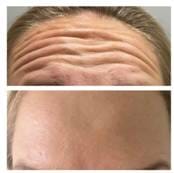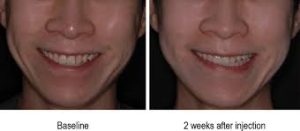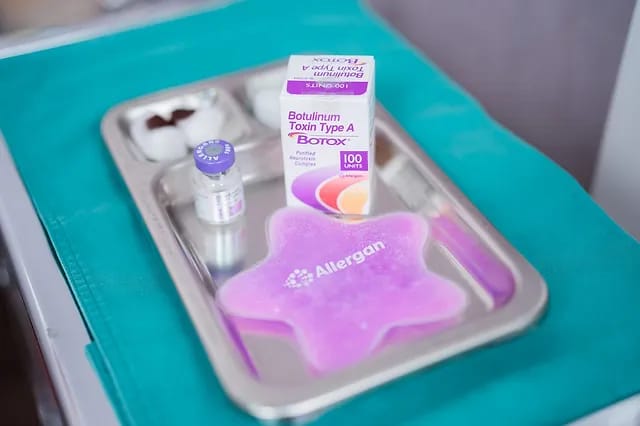What’s the point in the ‘2 week Botox review’?
The “two-week review” after Botox treatment is an essential part of the patient care process in the UK. It is NOT an opportunity to add more product whether it’s needed or not (please see my blog ‘Botox ‘top ups – how much is too much?’. This follow-up appointment is a critical step in ensuring patient satisfaction, safety, and the overall effectiveness of the treatment. Botox, or botulinum toxin, is a widely used cosmetic and therapeutic treatment for reducing wrinkles and fine lines. It is also employed in medical conditions such as migraines, excessive sweating (hyperhidrosis), and muscle spasms. However, like all medical procedures, it requires careful monitoring to achieve optimal results. In this piece, we will explore the importance of the two-week review after Botox treatment, its objectives, and how it benefits both the practitioner and the patient.
Overview of Botox and Its Effects
Botox works by temporarily paralyzing muscles in the injected area, which in turn softens the appearance of wrinkles.
 It does so by blocking the release of acetylcholine, a neurotransmitter that signals muscles to contract. Typically, the effects of Botox begin to become noticeable after three to five days and peak at around two weeks. The longevity of Botox results can vary, but effects generally last for three to six months before the muscle gradually regains function.
It does so by blocking the release of acetylcholine, a neurotransmitter that signals muscles to contract. Typically, the effects of Botox begin to become noticeable after three to five days and peak at around two weeks. The longevity of Botox results can vary, but effects generally last for three to six months before the muscle gradually regains function.
Given the variation in individual responses to Botox and the potential for unexpected outcomes, the two-week review is a safeguard to ensure the patient is satisfied and that the treatment has been successful in meeting aesthetic goals.
Key Aims of the Two-Week Botox Review
1. Assessment of Treatment Outcomes
The primary aim of the two-week review is to assess the effectiveness of the Botox treatment. By this time, the full effects of the injections should be visible, and the patient will have had a chance to observe how their face has responded. Some patients may feel that the results are perfect, while others may find that certain areas need adjustment, either because the treatment didn’t fully take effect or because it worked too well, leading to an unnatural or asymmetrical appearance.
At this point, the practitioner can evaluate whether the Botox has achieved the desired outcome in terms of reducing wrinkles and fine lines. The review provides an opportunity to address any areas that may require a “top-up” or correction, ensuring that the patient is happy with the overall result.
2. Checking for Side Effects or Complications
While Botox is considered a safe procedure when performed by a qualified professional, there are always risks associated with any injectable treatment. Common side effects of Botox include bruising, swelling, redness, and minor pain at the injection site. In rare cases, more severe complications such as drooping eyelids (ptosis), uneven smile, or difficulty speaking or swallowing can occur if the toxin migrates beyond the intended treatment area.
 The two-week review is the perfect time for the practitioner to check for these complications and ensure that any side effects have resolved or are being properly managed. If there are any ongoing concerns, the practitioner can take the necessary steps to mitigate them, whether through further treatment or referral to a specialist.
The two-week review is the perfect time for the practitioner to check for these complications and ensure that any side effects have resolved or are being properly managed. If there are any ongoing concerns, the practitioner can take the necessary steps to mitigate them, whether through further treatment or referral to a specialist.
FYI – the image is not one of my clients!
3. Adjusting Dosage or Technique for Future Treatments
Botox treatment is highly individualized, and different patients may require different doses and techniques to achieve their desired outcomes. The two-week review allows the practitioner to gather valuable information about how the patient’s muscles responded to the treatment. This insight can help in refining future treatments, ensuring that the patient gets the best possible results next time.
 For example, a patient may have needed a higher or lower dose in a particular area, or the practitioner may decide to adjust the placement of the injections to achieve a more natural appearance. By evaluating the results at the two-week mark, the practitioner can develop a more tailored treatment plan for the patient moving forward.
For example, a patient may have needed a higher or lower dose in a particular area, or the practitioner may decide to adjust the placement of the injections to achieve a more natural appearance. By evaluating the results at the two-week mark, the practitioner can develop a more tailored treatment plan for the patient moving forward.
4. Enhancing Patient Confidence and Satisfaction
From the patient’s perspective, the two-week review is an opportunity to address any concerns they may have about the treatment’s outcome. Patients may feel anxious if they notice asymmetry, uneven results, or if they are simply unsure whether the treatment has worked as expected. Having a scheduled review allows patients to voice these concerns in a supportive setting and receive reassurance or additional treatment if necessary.
Furthermore, the review demonstrates a commitment to patient care. It shows that the practitioner is invested in the patient’s satisfaction and wellbeing, which can significantly enhance trust in the provider and encourage patient loyalty.
5. Providing a Learning Opportunity for the Practitioner
For the practitioner, the two-week review is a valuable learning opportunity. Botox treatments, especially in cosmetic applications, are as much an art as they are a science. Every face is unique, and achieving the perfect balance of muscle relaxation and wrinkle reduction can take time and experience. By reviewing the outcomes at the two-week mark, practitioners can learn from each treatment and apply these lessons to improve their technique for future patients.
Additionally, feedback from the patient during the review can be incredibly helpful. If a patient felt that the treatment was uncomfortable or that the results were not what they had expected, the practitioner can adjust their approach accordingly, ensuring a better experience in the future.
The Importance of Communication During the Two-Week Review
Effective communication between the patient and practitioner is crucial during the two-week review. Patients should feel comfortable discussing any concerns they have about the treatment, whether they are aesthetic or health-related. Practitioners should take the time to explain why certain outcomes may have occurred and what can be done to address them.
It’s also essential for practitioners to manage patient expectations. Botox is not a permanent solution, and some patients may need multiple treatments to achieve their desired look. Additionally, certain facial areas may not respond as expected, or the effects may not last as long as anticipated. Clear communication about these possibilities can help avoid disappointment and ensure that patients have a realistic understanding of what Botox can and cannot do.
Conclusion
In conclusion, the two-week review after Botox treatment serves several key purposes, all of which contribute to the overall success of the procedure. It allows the practitioner to assess the treatment’s effectiveness, check for side effects, make adjustments if needed, and improve future treatments based on the patient’s response. For the patient, it provides reassurance, boosts confidence, and enhances overall satisfaction with the treatment.
In the UK, where Botox treatments are subject to stringent regulations and high standards of care, the two-week review is not just a formality—it’s a vital part of the treatment process. It ensures that both the patient and the practitioner are happy with the results and that any potential issues are addressed promptly. By prioritizing this follow-up appointment, practitioners can provide the highest level of care and help their patients achieve the best possible outcomes from their Botox treatments.

